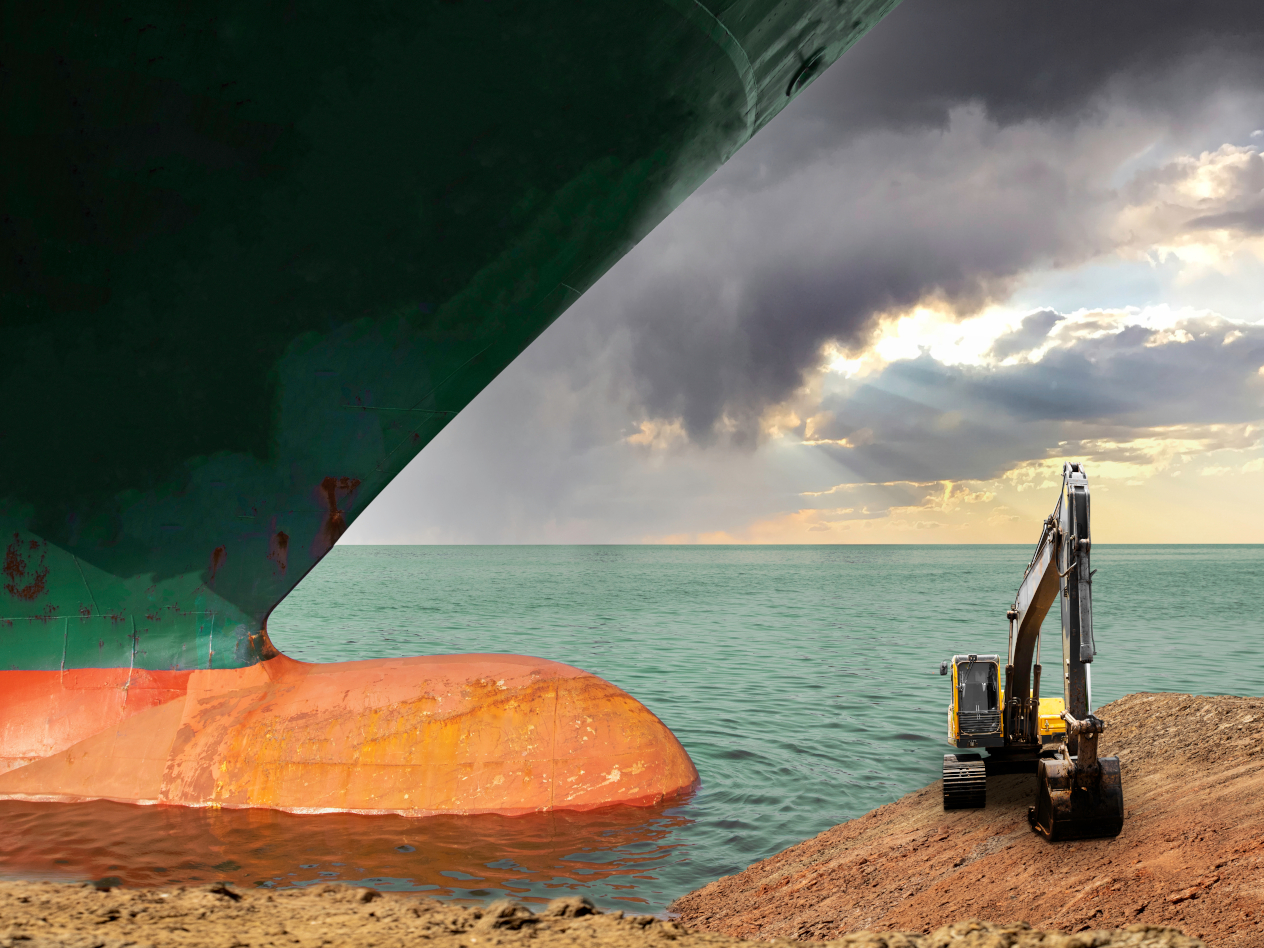The global supply chain and a ship’s blockage of the Suez Canal
- April 13, 2021
- By Guest Author
- 3 minute read

Panos Kouvelis contributed this post. He is the director of The Boeing Center for Supply Chain Innovation and Emerson Distinguished Professor of Operations and Manufacturing Management.
There was no worse time for global supply chain managers to hear about a 1,300-foot ship carrying 18,000 containers and weighing over 200,000 tons stuck, diagonally, in the Suez Canal and stopping global trade flows between the Mediterranean Sea and the Red Sea.
Major supply chain pains already were in play. Electronic chip supply chains were suffering shortages affecting diverse industries, such as autos and consumer electronic products. Tight shipping capacity was overstretched in an effort to respond to a quickly recovering demand for durable goods shipped from Asia to Europe and the US. Ports were severely congested on the West Coast of the US and in Europe. Now a major shipping route handling $10B in global trade a day was blocked for six days.
All of the supply chain headaches got worse because of the Suez Canal incident. (The ship was freed March 29.) Some of the ships carried electronic components and products that got further delayed, to the despair of factory managers and consumers waiting for them. Furthermore, other commodities from steel, coal and grains needed for production and consumption either in Europe, Asia or the East Coast of the US were going to be coming at least a week to a few weeks late.
360 ships in waiting
It would take days to get the 360 ships in waiting through the canal and to their next port. And, as queueing theorists like to remark, the “batched departures” from the canal would hit the already congested ports in Europe (e.g., Antwerp and Rotterdam) and on the West Coast (e.g., LA and Seattle) as “batched arrivals,” an overloading pattern creating further delays for the ships in finding berthing space and getting unloading services. The delays would result in further loss of shipping capacity for all products, and as much as 4% for shipping crude and petroleum products.
For ships rerouted around Africa’s Cape of Good Hope the delays would be for at least two weeks and with increased fuel costs of at least $30,000 per day. Freight costs that were already high, with China to the West Cost more than double and China to Europe more than triple over a year ago, would get even higher for the coming year. Moreover, containers stuck at sea and waiting for unloading at ports accentuated the empty container shortages and imbalances in this crucial ingredient of global shipping flows.
More for coffee and gas
As you sip your gourmet coffee from Africa, get ready to pay a few extra cents for your coffee and your gas, and to wait a few weeks longer for your Japanese car, exercise bike, new PlayStation and iPad.
On the other hand, if you hold shares in major ocean shipping companies, these are good times. Probably not the best times, though, for ship and maritime load delay insurance companies. As always, some win and some lose.
Global supply chain managers feel no great relief: They know all about ripple effects and “bullwhips” cracking and hitting long lead-time, just-in-time, global chains in painful ways. The Suez Canal incident will be felt within their retailing, manufacturing, chemical and oil chains at least for the next month.
Media inquiries
For assistance with media inquiries and to find faculty experts, please contact Washington University Marketing & Communications.
Monday–Friday, 8:30 to 5 p.m.
Sara Savat
Senior News Director, Business and Social Sciences
